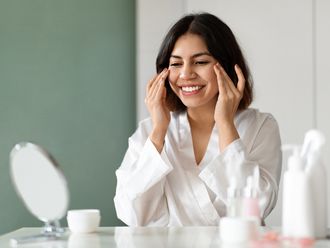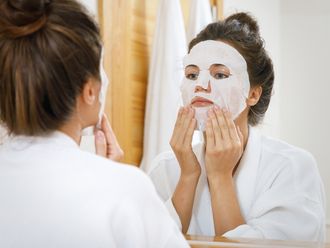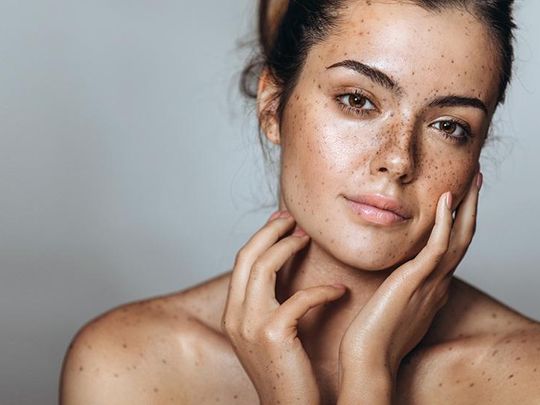
There used to be a time when there were two very different and completely separate beauty camps. On one side sat the eco, green-minded brands developing gorgeous products with either organic, ethically sourced or as naturally derived ingredients as possible. And whilst these components are not inefficient at helping keep skin hydrated, nourished and protected, there was a limit to how much they could do in terms of anti-ageing and affecting real change in the skin. Which is where the other beauty camp came in. These are brands and products that are science led and developed. The ingredients list read like something out of a science fiction movie and take a degree in Latin to decipher. However it is these products that have always been perceived to hold the key to actually doing something to your skin.
It could easily feel like you had to make a choice. Go with a product that fulfilled a more environmentally friendly desire, knowing you wouldn’t get the best results possible. Or ditch your morals and embrace science-heavy products containing few ingredients that came from the outside world and had been made at some expense to the planet.
It is also important to know that there has always been a fine line between where nature ends and science begins when it comes to ingredients. Take Retinol, for example. Considered to be the gold standard ingredient for reducing wrinkles and breaking down pigmentation, in its purest form it is vitamin A, and is found in food. Therefore could be deemed as a ‘natural’ ingredient. However to be compatible in skincare it has to be altered from its natural form and broken down into retinoid acid before it can do anything to stimulate skin cells. That involves laboratories and people in white coats, taking away any element of the natural ingredient that it started life as on the production line. And even the most ‘natural’ of products will often have to turn to science to ensure that their ingredients stay effective once opened and exposed to sunlight and air. Hello preservatives or vacuum packed packaging.
Thankfully that fine line is becoming more and more blurred, for now brands that were once firmly and only in the science camp have started to sit happily and legitimately alongside more natural and eco aware brands. And that is thanks to the rise of products containing naturally sustainably sourced ingredients being used in conjunction with harder hitting lab created elements. As well as brands looking to how they are packaging their products; trying to reduce the amount of non-recyclable plastics used, and reducing their carbon footprint. An issue that French beauty brand Guerlain has taken very much to the core of the business. It has even gone so far as to create a Sustainable Development Committee, designed purely to ensure the company is doing everything it can to be as eco aware as possible. ‘Since Guerlain was created, its founders have always sought to protect the sources of their natural ingredients,’ explains CEO Laurent Boillot. ‘We are placing sustainable development at the heart of our company’s strategy. I often say that while we can’t save the planet on our own, we can play our part.’
So what does this mean for you, the buyer of beauty wonders? It means if you choose your products with the environment in the forefront of your mind, your selection has got even wider. If however you select skincare on efficiency and results, then know that whilst your skin is transforming, small steps have already been taken so that your purchase has done some good to the planet. And surely that’s the best type of beauty there is.
Our pick of the best beauty buys that are making the world a better place.
The Wave Maker
What is it? Aveda Texture Tonic, Dh152
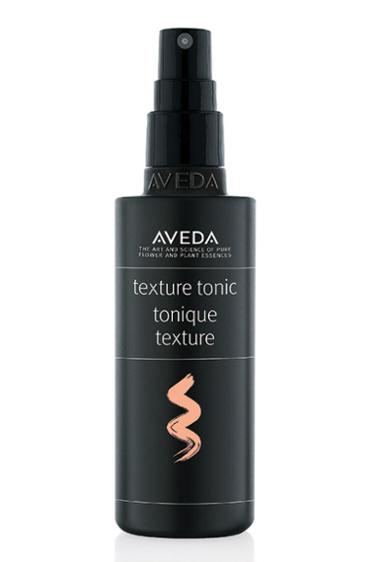
Beauty credentials: If tousled, beachy waves are your look du jour, this is what you need to give your hair that essential movement and bend without any of the stickiness you can get from other salt sprays. How does it manage this? It uses magnesium sulphate (aka epsom salts) instead of sodium chloride (regular salt) along with cane sugar, this combination adds texture without drying the hair out and adds a glossy shine too.
Eco credentials: Aveda are known for using plants at the base of their products combining modern day science with traditional Ayurvedic principles that respect the Earth. Not only were they the first beauty company to manufacture with 100 per cent wind power but they have won awards for their commitment to sustainable products and packaging production. Plus their charity initiatives have raised more than $44 million for environmental projects around the world.
The Skin Comforter
What is it: Dior Hydra Life Intense Sorbet Creme, Dh273

Beauty credentials: This lightweight, butter-like cream packs a serious hydration punch making it ideal for super dry and dehydrated skins or for slathering over skin like a mask at night or when travelling.
Eco credentials: Dior have made a conscience effort to up the inclusion of natural ingredients in their products. So much so that after just one year, the whole of the Hydra Life range has been reformulated to now include 83 per cent natural ingredients. They have also purified the formulas so they contain no parabens and even less silicone.
The Does-It-All Eye Serum
What is it: Chanel Blue Serum Eye, Dh350
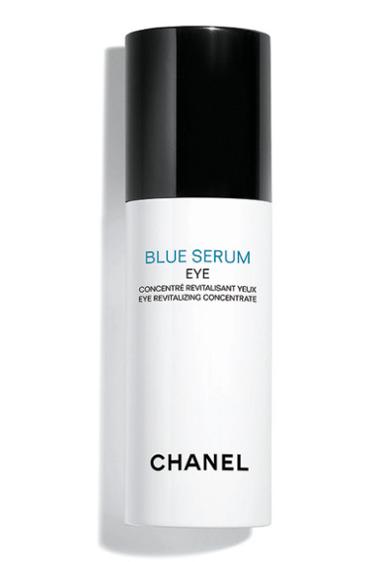
Beauty credentials: An eye cream should tackle all of your woes in one go, and that’s exactly what this does. It’s paced with antioxidants to de-puff and fight against dark circles and moisturising ingredients to keep the delicate skin hydrated and smooth.
Eco credentials: For their Blue Serum franchise, Chanel travelled to areas of the world where people live best in the hope they could find ingredients that would simulate the various elements of their well-being to then channel into skincare. This holistic approach was a first for Chanel and garnered three potent ingredients. Green Coffee extract from Costa Rica, Olive oil from Sardinia and Lentisk gum extract from Greece. All extracted with a new eco-friendly method that’s kinder to the planet whilst also harnessing maximum potency from the ingredient.
The Face Firmer
What is it: Clarins Extra Firming Dh483
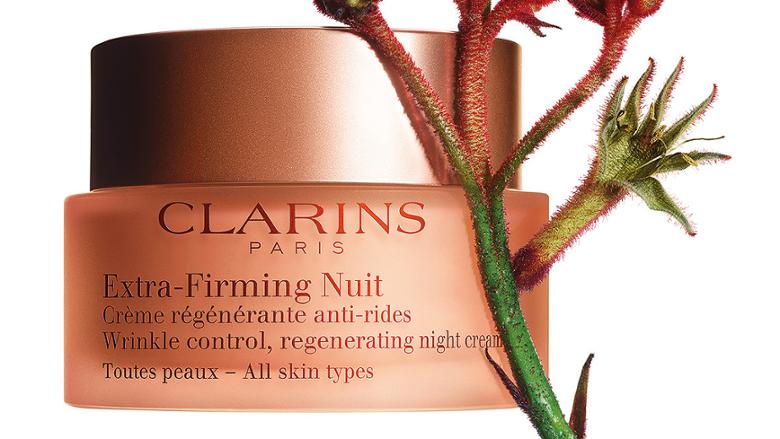
Beauty credentials: The discovery of two new plant extracts is what made Clarins reformulate their best selling extra-firming cream. It now contains organic mitracarpus, which stimulates the production of collagen, reinforces the firmness of skin cells and boosts elastin fibres which plump up the skin. As well as kangaroo flower. Native to Australia it is the cluster of flowers at the top of the plant that attracted Clarins’ developers the most. It was found to not only protect existing skin cells but also encourage regeneration of new ones.
Eco credentials: Not only have Clarins always believed in using natural, organic ingredients where possible – 85 per cent of the ingredients in this cream are natural, and half of those are organic – but they have gone above and beyond to create three fair trade agreements to support the economic and social development of the communities involved in their harvest. They have also developed a biomimetic extraction process which means they can get their ingredients in the most environmentally respectful way possible and 25 per cent of their packaging is made from recycled glass and card made from sustainably-managed forests.
The Youth Boosting Moisturiser
What is it: Guerlain Orchidée Impériale, Dh1,966
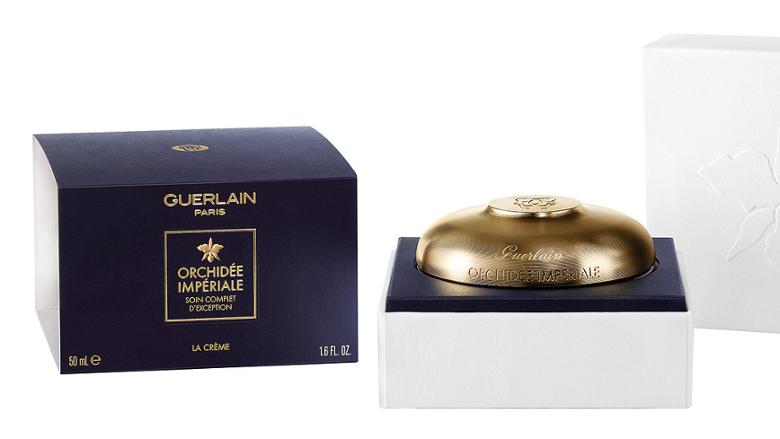
Beauty credentials: Eleven years after its launch, this amazing cream has had another revamp and this time it’s purely to up its environmentally friendly credentials. But the cream inside is just as good. Now it utilises the star orchid, a plant which excels in keeping oxygen within its cells to keep on rejuvenating itself, to do exactly the same to the skin. Encouraging it to work as as efficiently as when it, and you, were younger. That leads to plumper and more glowy skin, and you can’t ask for more than that.
Eco credentials: Guerlain have set themselves the goal of having 100 per cent eco-designed products – in fact 95 per cent of their perfume bottles are now recyclable – and a 50 per cent reduction in C02 emissions by 2020, which they are well on their way to achieving. They have other issues which they are combating too; protecting raw materials and ecosystems, promoting diversity and social awareness for their employees, sustainable procurement with suppliers and partners and to control their C02 emissions caused by shipments and travel.



